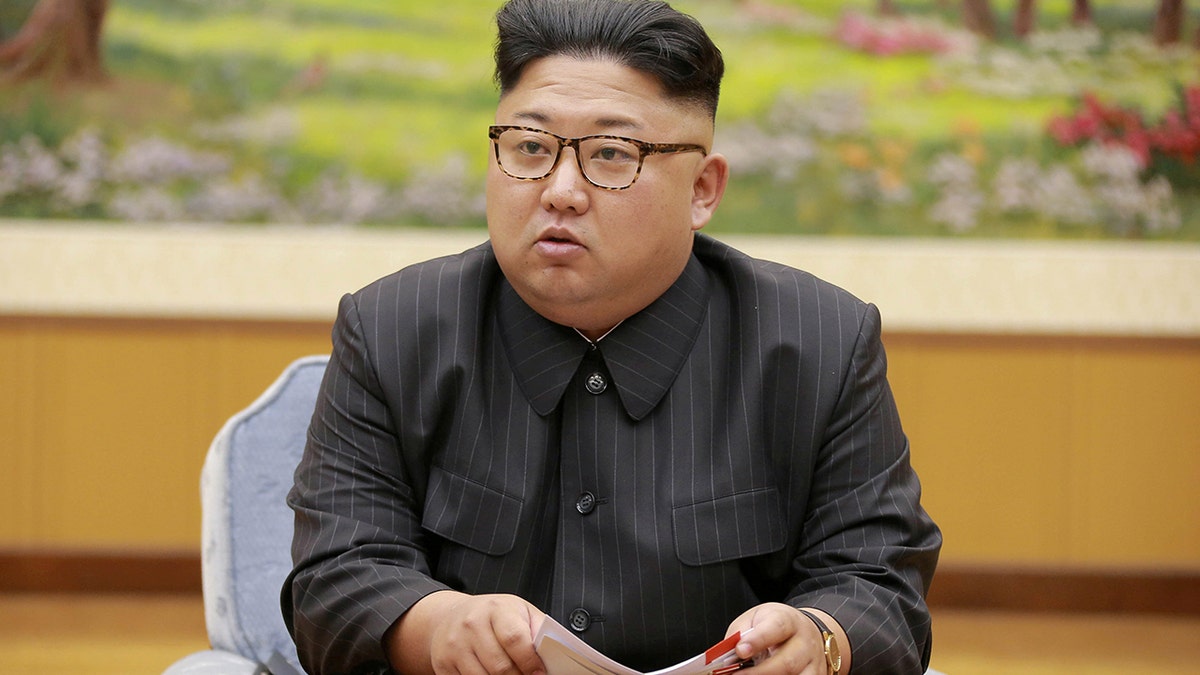
North Korea reportedly owes New York City $156,000 in parking tickets. North Korean leader Kim Jong Un is pictured.(Reuters)
One single reliable warhead fired by North Korea could destroy densely populated cities, killing millions.
Those who aren’t killed in a nuclear blast would be left with devastating injuries while their cities would be flattened with vital infrastructure destroyed.
A detailed analysis by 38 North, at the US-Korea Institute at Johns Hopkins School of Advanced International Studies, has revealed what would happen if Kim Jong-un did the unthinkable and actually fired a nuclear weapon.
In A Hypothetical Nuclear Attack on Seoul and Tokyo: The Human Cost of War on the Korean Peninsula, Michael J Zagurek paints a terrifying picture of the damage it could cause.
Assuming North Korea has 25 operational nuclear weapons with warhead yield ranges from 15 to 250 kilotons timed for airburst at optimal altitude, Zagurek runs through seven different scenarios.
The warhead yield ranges are based on current and possible future capabilities and the estimates of casualties were also based on the size of the city and population density.
In the most extreme estimate of a 250kt weapon being used, Seoul and Incheon which has a combined population of 24,105,000 would have 783,197 fatalities, and 2,778,009 injuries.
Tokyo and Yokohama with a combined population of 37,900,000 would have 697,665 fatalities and 2,474,627 injuries.
Maps showing four blast areas from a 250 kt airburst detonation also show how far the fallout and blast would reach.
North Korea has launched 98 ballistic missiles since 2011, including 19 this year.
However it remains unclear exactly how many warheads it possesses and how advanced they are.
Nuclear disarmament campaigner John Hallam said the analysis was fairly authoritative.
Mr Hallam speculated the DPRK (Democratic People’s Republic of Korea) had between 40 and 60 warheads.
He also said he believed it will be a while before North Korea hit its nuclear goals.
“I’m also inclined to think that it will be a while before they fit a 250Kt warhead to more than one or two rockets,” he said.
“So 38 North analysis being based to a large extent on smaller warheads is not unreasonable — but the number of larger warheads will clearly rise over time.”
Mr Hallam said it was reasonable to assume Seoul and Tokyo were obvious targets but the analysis didn’t include an ability to strike US west coast cities.
“If that ability does exist, then it’s also possible for them to strike Sydney, which doesn’t mean they necessarily will — the highest priority target in Australia, indeed almost in the world — is Pine Gap, critical for US command and control,” he said.
“If US cities become part of the equation which they will in a year or two if they are not now, then that body count will be higher.”
He also pointed out the analysis didn’t take into account US President Donald Trump’s threat to wipe out the DPRK, which would increase the body count even further.
Mr Hallam said there would also be fallout which would also add to the huge casualty toll.
“It would be necessary to take into account the effects of fallout drifting in one direction all over South Korea, and in the other direction, into Manchuria,” he said.
“Maybe once Seoul has been leveled, which can be done without use of nukes at all, a little fallout from the rubble bouncing in the DPRK is of lesser consequence, but it needs to be taken into account somehow.”
Meanwhile Mr Trump said his administration’s goal was for North Korea to denuclearise.
“We cannot allow this dictatorship to threaten our nation or our allies with unimaginable loss of life,” he said.
“We will do what we must do to prevent that from happening. And it will be done, if necessary, believe me.”
The President had been discussing Iran and North Korea with US military leaders and posed for a photo with them before declaring the moment “the calm before the storm”.
“You guys know what this represents?” Mr Trump said after journalists gathered in the White House state dining room to photograph him and First Lady Melania Trump with the uniformed military leaders and their spouses.
“Maybe it’s the calm before the storm,” he said.
When asked what storm, Mr Trump replied: “You’ll find out.”
- with Reuters
This story originally appeared in news.com.au.








































